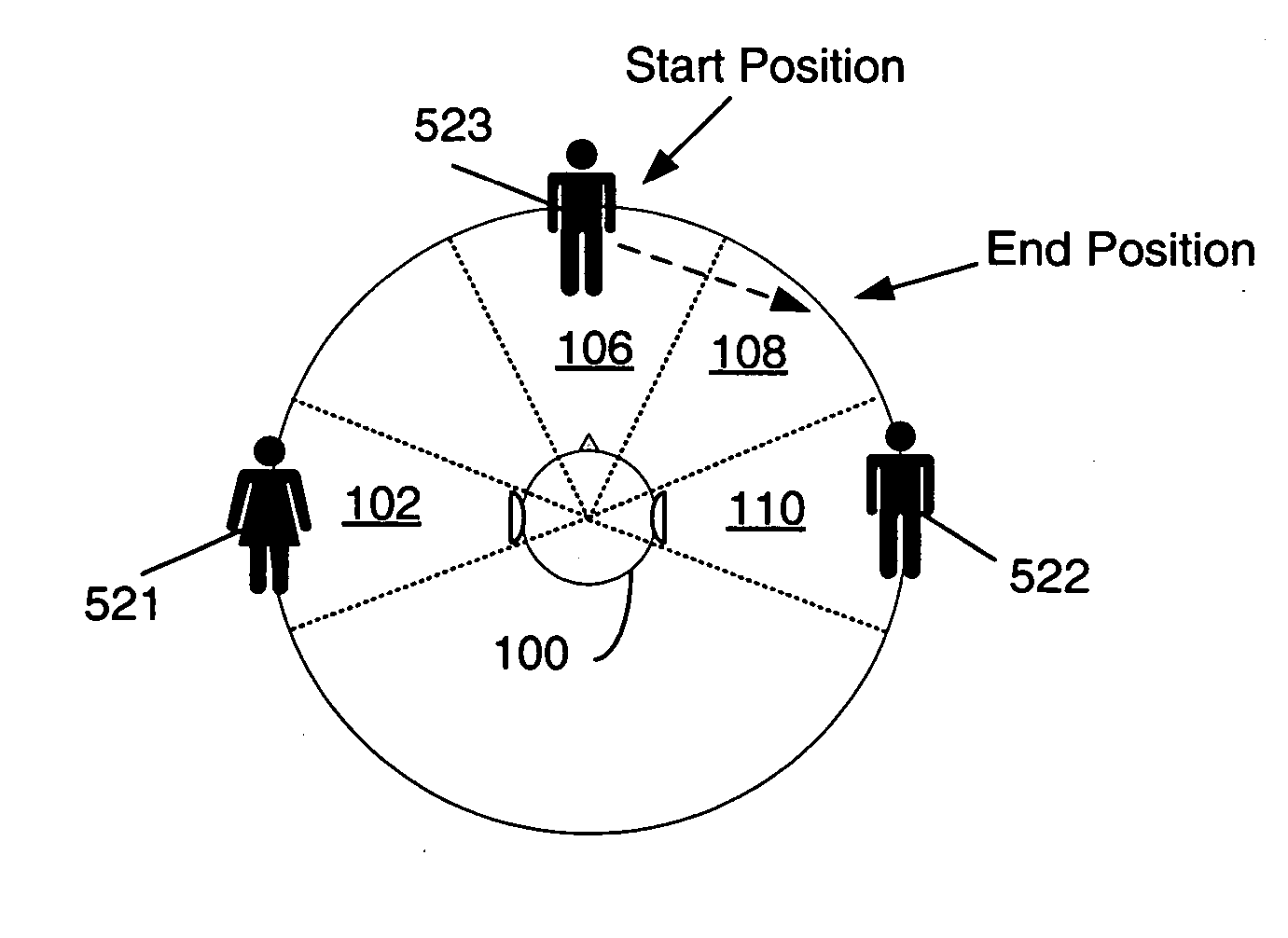Automatic participant placement in conferencing
a participant placement and conferencing technology, applied in the field of automatic participant placement in conferencing, can solve the problems of inferior speech quality of narrowband speech coders/decoders (codecs), difficult to recognize the identity of speakers, and difficulty in recognizing speakers' identities, so as to maximize fewer interruptions and confusions during communication, and the effect of maximizing the listener's ability to d
- Summary
- Abstract
- Description
- Claims
- Application Information
AI Technical Summary
Benefits of technology
Problems solved by technology
Method used
Image
Examples
Embodiment Construction
[0025] In the following description of various illustrative embodiments, reference is made to the accompanying drawings, which form a part hereof, and in which is shown, by way of illustration, various embodiments in which the invention may be practiced. It is to be understood that other embodiments may be utilized and structural and functional modifications may be made without departing from the scope of the present invention.
[0026] Aspects of the present invention describe a system for sound source positioning in a three-dimensional (3D) audio space. Systems and methods are described for calculating feature vectors describing speaker's voice characters for each speech signal. The feature vector may be stored and associated to a participant's ID. A position for a new participant may be defined by comparing the voice fingerprint of the new participant to the fingerprints of the other participants and based on the comparison, a perceptually best position for the new participant may ...
PUM
 Login to View More
Login to View More Abstract
Description
Claims
Application Information
 Login to View More
Login to View More - R&D
- Intellectual Property
- Life Sciences
- Materials
- Tech Scout
- Unparalleled Data Quality
- Higher Quality Content
- 60% Fewer Hallucinations
Browse by: Latest US Patents, China's latest patents, Technical Efficacy Thesaurus, Application Domain, Technology Topic, Popular Technical Reports.
© 2025 PatSnap. All rights reserved.Legal|Privacy policy|Modern Slavery Act Transparency Statement|Sitemap|About US| Contact US: help@patsnap.com



